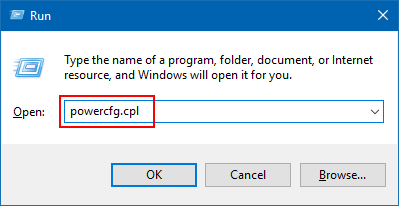To change your laptop’s power settings, follow these general steps:
Table of Contents
Open the Power Options:
Press the Windows key + R on your keyboard to open the Run dialog box. Type “powercfg.cpl” and hit Enter. This will open the Power Options window.
Choose a Power Plan:
In the Power Options window, you’ll see different power plans listed. These plans are pre-configured with specific settings. You can select one of the existing plans or create a custom plan by clicking on “Create a power plan” from the left-hand menu.
Adjust Power Plan Settings:
Once you’ve selected a power plan, click on “Change plan settings” next to the plan you want to modify. This will allow you to adjust the settings for that particular power plan.
Customize Power Plan Settings:
In the next window, you can customize various power settings according to your preferences. Here are some common settings you might want to modify:
- Turn off the display: Specify the duration of inactivity after which the display should turn off.
- Put the computer to sleep: Determine the duration of inactivity after which the computer should enter sleep mode.
- Adjust screen brightness: Configure the level of brightness for different power states (plugged in or on battery).
- Change advanced power settings: Click on the “Change advanced power settings” link to access more granular settings, including processor power management, hard disk power management, USB settings, and more.
Apply Changes:
Once you have adjusted the power plan settings to your preference, click on the “OK” or “Apply” button to save the changes.
Remember that specific steps may vary slightly depending on your laptop’s operating system and manufacturer. However, the general concept remains the same across most Windows-based laptops.
Frequently Asked Questions (FAQ) about How to change your laptop’s power settings.
Q1: Why should I change my laptop’s power settings?
A1: Changing your laptop’s power settings can help you optimize battery life, improve energy efficiency, and customize power-related behavior to suit your needs. It allows you to balance performance and power consumption based on your usage requirements.
Q2: How do I access the Power Options on my laptop?
A2: To access the Power Options, press the Windows key + R to open the Run dialog box, type “powercfg.cpl,” and hit Enter. This will open the Power Options window.
Q3: Can I create a custom power plan?
A3: Yes, you can create a custom power plan. In the Power Options window, click on “Create a power plan” from the left-hand menu, and then customize the settings to your preference.
Q4: What are the commonly adjusted power settings?
A4: Commonly adjusted power settings include the duration of inactivity before the display turns off, the duration before the computer enters sleep mode, screen brightness levels for different power states, and more. Advanced power settings allow customization of specific components like the processor, hard disk, and USB settings.
Q5: Will changing power settings affect my laptop’s performance?
A5: Adjusting power settings can affect performance to some extent. If you choose power-saving options, it may reduce the performance to conserve battery life. However, you can customize the settings to balance performance and power consumption based on your preferences.
Q6: Do power settings changes apply to both AC power and battery power?
A6: Yes, power settings can be configured separately for when your laptop is connected to AC power and when it’s running on battery power. This allows you to optimize settings for different scenarios.
Q7: Can I reset the power settings to their default values?
A7: Yes, you can reset the power settings to their default values. In the Power Options window, click on “Restore default settings for this plan” or “Restore plan defaults,” depending on the version of Windows you’re using.
Q8: Do power settings changes take effect immediately?
A8: Yes, power settings changes usually take effect immediately after you apply them. However, some changes, such as display or sleep settings, might require your laptop to go idle for a specific period before they become active.
Q9: Are power settings the same on all laptops?
A9: Power settings might have slight variations depending on the laptop’s operating system and manufacturer. However, the general concept of adjusting power settings is similar across most Windows-based laptops.
Q10: Can I adjust power settings on other devices, like a desktop computer?
A10: Yes, you can adjust power settings on other devices, including desktop computers, as long as they are running on a compatible operating system. However, the specific steps and available options may differ from those on laptops.




